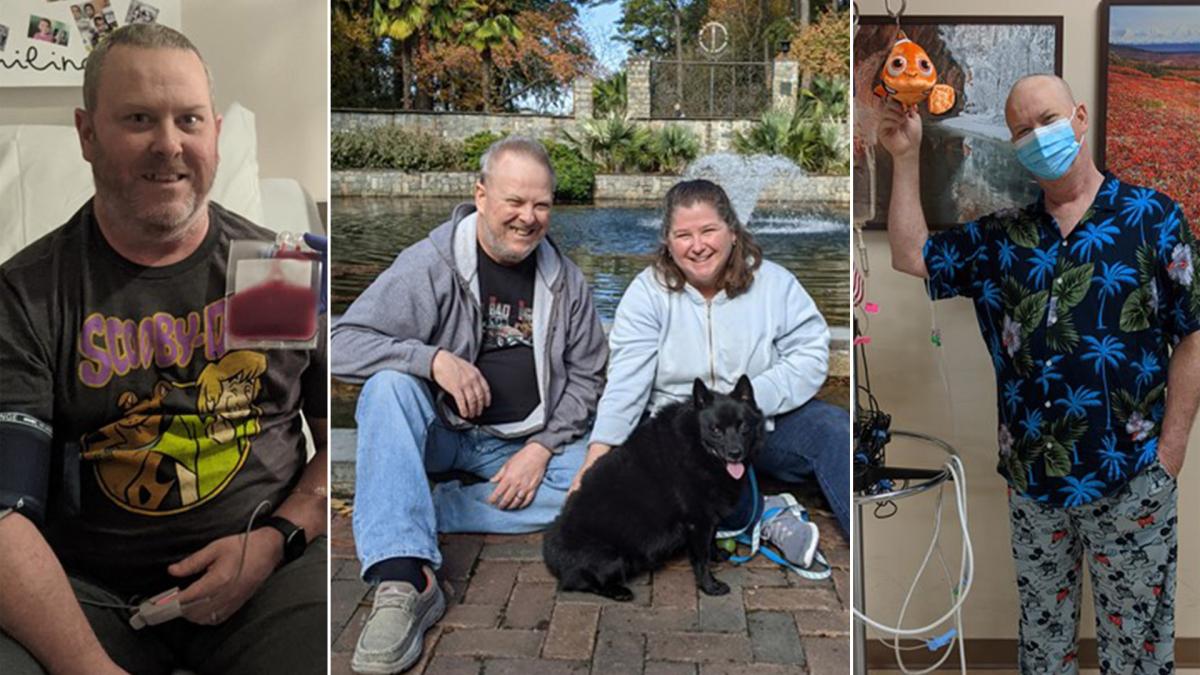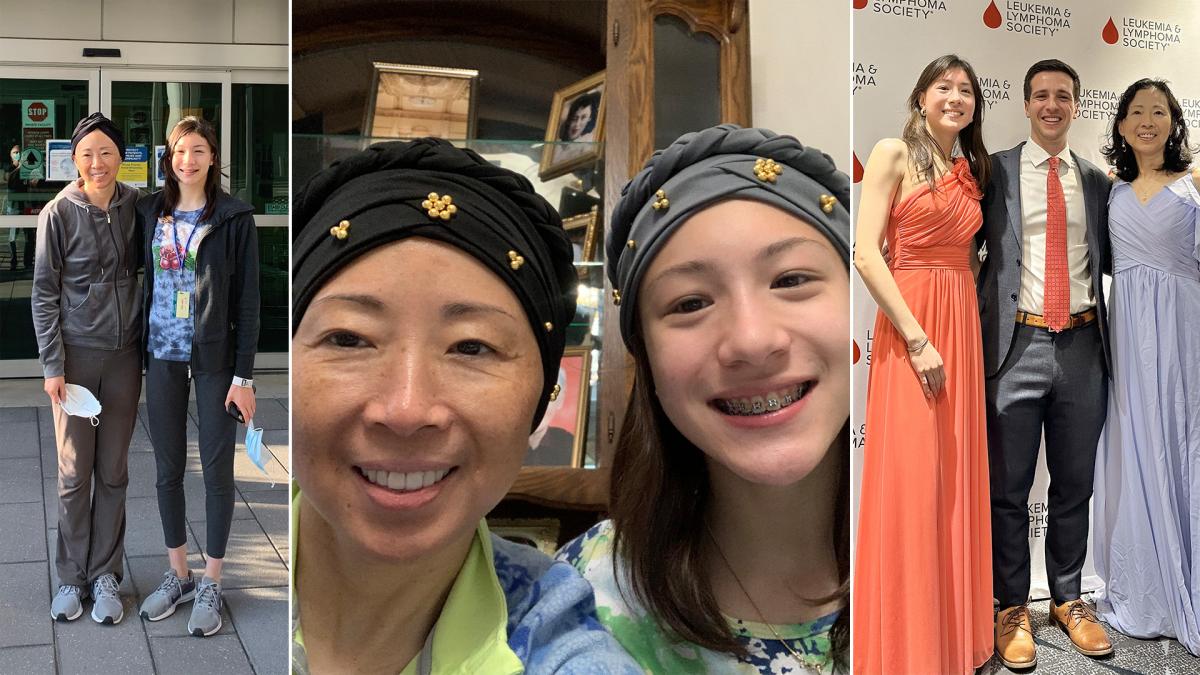Imagine a community filled with families, friends, and healthcare professionals united to transform the meaning of living with blood cancer. This diverse group of people—including researchers, doctors, care partners, and healthcare teams—are bound together by hope, resilience, and a shared goal: to overcome the challenges and live longer better lives.
Leukemia, lymphoma, myeloma, myelodysplastic syndromes (MDS), and myeloproliferative neoplasms (MPNs) are all types of blood cancer that can affect the bone marrow, the blood cells, the lymph nodes, and other parts of the lymphatic system.
Bone marrow and stem cell transplants can be lifesaving treatment options, offering a second chance to many patients when other treatments may not be effective.
Bone marrow and stem cell transplants are two forms of the same treatment, but they differ in how the cells are obtained from the body. In a bone marrow transplant, cells are extracted directly from the bone marrow. In contrast, a stem cell transplant involves collecting cells from peripheral blood, similar to a standard blood draw. Collecting stem cells from peripheral blood is generally easier than obtaining them from bone marrow, which is why most transplants are performed using peripheral blood. As a result, the term "stem cell transplant" is often used since peripheral blood is the predominant method for cell collection.
The Power of Transplants
Bone marrow and stem cell transplants replace damaged or diseased bone marrow with healthy cells, helping restore normal blood cell production. For many patients, this can provide a renewed opportunity for health. In the U.S., over 22,000 blood cancer patients undergo these transplants each year. With the right donor match, many patients have remarkable recoveries. However, finding that match can be challenging, as there are often more patients than available donors.

Charles's Story: Writing a Life-Changing Law From His Hospital Bed
Charles, a husband, father, and criminal prosecutor, faced a life-changing diagnosis of acute myeloid leukemia (AML). He learned from his doctor he had no matches in the bone marrow registry. Feeling isolated and overwhelmed by the uncertainty, he underwent harsh chemotherapy in hopes of receiving a transplant. Miraculously, his brother—a brain cancer survivor—was eventually approved to be his donor, providing a critical lifeline. Ten months after his allogeneic transplant, Charles regained his strength and got to enjoy more time with his family.
Motivated by his experience, he drafted "Charlie's Law," a piece of legislation aimed at increasing donor registrations through California's DMV—particularly benefiting minority communities who face more significant challenges in finding matches. In 2022, “Charlie’s Law” now offers 18- to 40-year-old Californians applying for or renewing their California driver’s license to be a bone marrow donor by checking a box, much like organ donation. His story illustrates the power of transplants, the importance of advocacy, and systemic change.
“‘Charlie’s Law’ will ensure that no patient waiting for a bone marrow transplant will hear that they have no options.”
— Charles, blood cancer survivor

Ken's Story: Both A Bone Marrow Donor and Recipient
Ken's experience further underscores the impact of these transplants. During his military career in the 1980s, he registered as a bone marrow donor, and he had the opportunity to donate in 2003. Years later, in October 2020, he was diagnosed with leukemia and faced his own need for a stem cell transplant. After receiving a transplant in March 2021, Ken celebrated his remission and returned to work with a non-profit that had supported him during treatment. Unfortunately, he relapsed in 2023, about two and a half years after his stem cell transplant.
While not cured, things stabilized, allowing him to return to his everyday life. Ken is not sure how long this will last, but he hopes it will continue and that other options for new medicines or clinical trials will become available. Unfortunately, another stem cell transplant is not likely due to the risks and impact on quality of life for many months afterward.
Ken’s story emphasizes the importance of the marrow donation process because you never know when that kindness may need to be returned.
“It has been a challenge, but for now, things are going okay.”
— Ken, blood cancer survivor
Chloe's Story: Became a Donor for her Mom in Junior High
At 13 years old, Chloe became the youngest stem cell donor at Johns Hopkins Hospital. She was shattered when her mother was diagnosed with acute myeloid leukemia (AML) in 2022. After her initial attempt to donate bone marrow was unsuccessful, Chloe underwent apheresis, a process that separates a person’s blood components—and that successfully collected the stem cells her mother needed. Today, her mother is in remission, and Chloe has become an advocate for awareness and policy change and is actively involved in The Leukemia & Lymphoma Society’s (LLS) Student Visionaries of the Year.
“To my 13-year-old self, I want you to know that what you’re doing is incredibly brave, and it’s okay to be scared and overwhelmed. But it gets better. Whatever hardships you are experiencing right now will help you grow into a stronger, more mature person.”
— Chloe, blood cancer advocate
Support Beyond the Transplant
As patients and their care partners navigate the process surrounding transplants, it's vital to remember that support is available. LLS provides a wealth of resources to make things easier. From personalized assistance through trained oncology social workers to nutritional consultations, we are dedicated to improving quality of life for patients and their families.
The emotional and physical demands of caring for loved ones can also be significant. Leaning on available resources and connecting with support groups can make a meaningful difference. Remember: you're not alone.
The Ongoing Reality
Despite advancements, new diagnoses of blood cancer continue to rise, with over 187,740 new cases annually in the U.S. New cases of leukemia, lymphoma, and myeloma are expected to account for 9.4 percent of the estimated 2,001,140 new cancer cases that will be diagnosed in the US in 2024. That's a new diagnosis roughly every three minutes.
At LLS, we’re committed to transforming lives through research, advocacy, and support services. With your help, we can continue to reach more people and ensure that every patient has access to the treatments they need.
Join Us in Making a Difference
Your involvement can make a significant difference, whether through donating, advocating, or spreading awareness.
Together, we are a community where families, friends, and healthcare professionals come together to live with and beyond blood cancer. To work towards a future where blood cancer is less common, and transplants can provide more than a piece of themselves, but peace of mind for those and their loved ones with blood cancer.
To learn more, visit:


